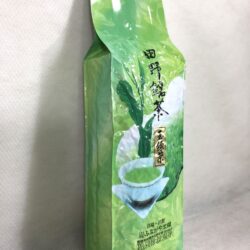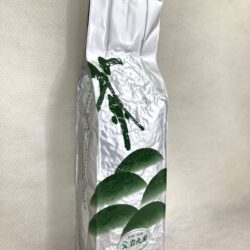Japanese tea is produced from green tea leaves that is steamed or roasted and dried but not fermented. The quality varies according to processing and which part of the plant is picked.
| Tea Type | ||
|---|---|---|
| Quality | Tea Color | Package |
| Characteristic | ||
| GYOKURO | ||
| Highest | Green | Loose Leaf |
| Fine and expensive type that differs from SENCHA | ||
| TAMARYOKUCHA | ||
| Higher | Green | Loose Leaf |
| Shorter and softer than SENCHA leaves, also called GURICHA | ||
| FUKAMUSHI-SENCHA | ||
| Higher | Green | Loose Leaf |
| Steamed two or three times as long as standard SENCHA | ||
| SENCHA | ||
| Standard | Green | Loose Leaf |
| The most frequently consumed in Japan | ||
| SHIRAORE | ||
| Economy | Light Green | Loose Stem |
| Made from SENCHA stem not leaf, a kind of KUKICHA | ||
| BANCHA | ||
| Economy | Green | Loose Leaf |
| Lower grade of SENCHA, for daily use | ||
| KAMAIRI-BANCHA | ||
| Economy | Green | Loose Leaf |
| Roasted BANCHA not steamed, like Chinese tea | ||
| HOJICHA | ||
| Standard | Brown | Loose Leaf |
| Roasted BANCHA leaves over charcoal, low in tannins | ||
| GENMAICHA | ||
| Economy | Green | Loose Leaf |
| Mixed BANCHA with roasted brown rice, mild with a distinctive popcorn flavour | ||
| KAMAIRI-GENMAICHA | ||
| Economy | Green | Loose Leaf |
| Mixed KAMAIRI-BANCHA with roasted brown rice, mild with a distinctive popcorn flavour | ||
| GENMAI-HOJICHA | ||
| Standard | Brown | Loose Leaf |
| Mixed HOJICHA with roasted brown rice, mild with a distinctive popcorn flavour | ||
| GENMAI-TAMARYOKUCHA | ||
| Standard | Green | Loose Leaf |
| Mixed TAMARYOKUCHA with roasted brown rice, mild with a distinctive popcorn flavour | ||
| MATCHA | ||
| Highest | Thick Green | Powdered Leaf |
| Used in the tea ceremony, made from a special variety of tea called TENCHA | ||
| FUNMATSUCHA | ||
| Standard | Thick Green | Powdered Leaf |
| Milled BANCHA, can make without a teapot, also used in making sweets | ||
| KONACHA | ||
| Economy | Deep Green | Dust Leaf |
| Dust parts after processing leaves, usually served at sushi restaurants | ||

